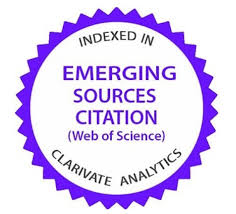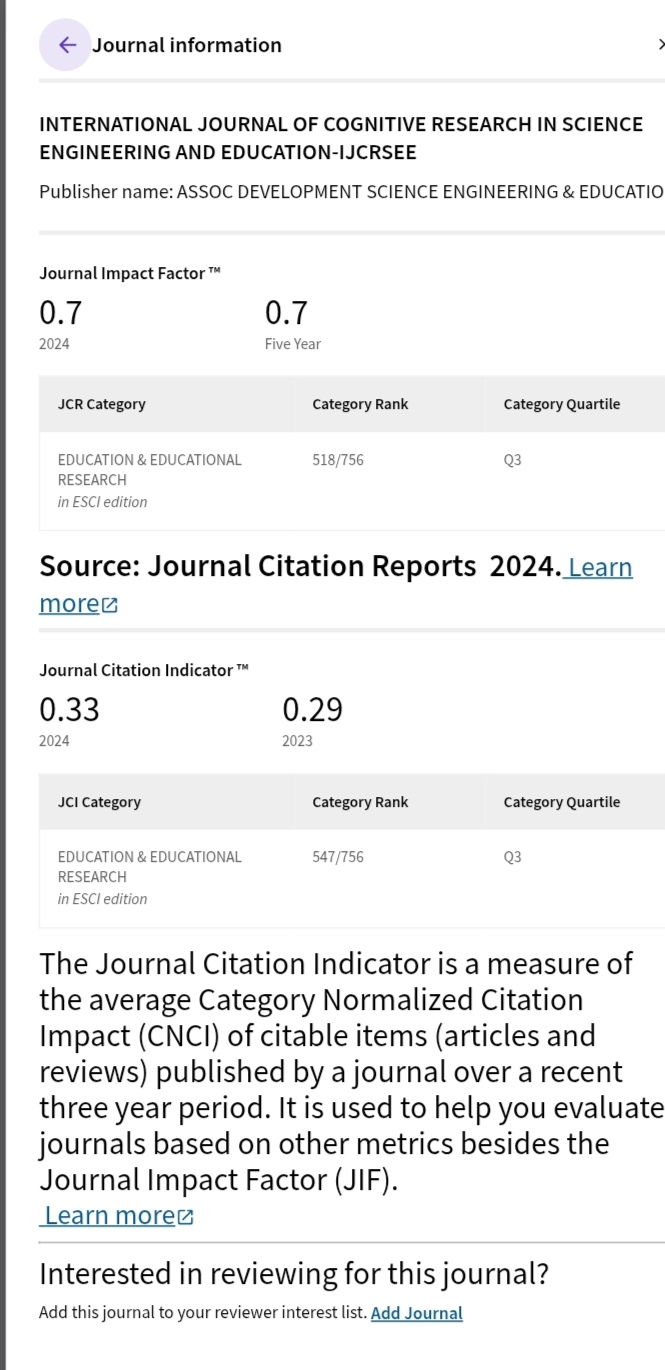A Study of Primary School Teachers’ Tendencies Regarding the Usefulness of Dramatization in the Educational Process
DOI:
https://doi.org/10.23947/2334-8496-2022-10-2-145-162Keywords:
Dramatization, Education, pedagogy, Mann-Whitney U test, Kruskall-Wallis test, Inferential StatisticsAbstract
In this article, we attempt to examine the general teachers’ attitudes towards dramatization and the differences that arise according to their major demographic elements, using inferential statistics methodology. Our sample consists of 60 (sixty) Greek teachers, of which 15 (fifteen) are male and 45 (forty-five) are female respondents. The teachers completed all questionnaire’s statements correctly (without missing values), allowing us to draw valuable conclusions on both their knowledge and their perspectives regarding the usefulness of dramatization in a school environment and the necessity of its inclusion in the educational process. The analysis focuses both on the general teachers’ tendencies and the existing differences that are caused according to the respondents’ sex, age, years of experience and their willingness of working with immigrant students. Our analysis is carried out via the Mann-Whitney, Kruskal-Wallis and chi-square statistical tests. These statistical methods are ideal for the comparison of data resulting from questionnaires based on the Likert scale, providing trustworthy and valuable conclusions about the attitudes towards the inclusion of drama in the educational procedure. This paper reveals important existing differentiations in the viewpoints of Greek primary school teachers in terms of dramatization in education, while it brings out a quite positive attitude towards the benefits of including drama in the teaching process of primary schools.
Downloads
References
Adeniran, A. O. (2019). Application of Likert Scale Type and Cronbach’s Alpha Analysis in an Airport Perception Study. Scholar Journal of Applied Sciences and Research, 2(4), 1-5. https://innovationinfo.org/articles/SJASR/SJASR-4-223.pdf
Andrade, C. (2019). The P Value and Statistical Significance: Misunderstandings, Explanations, Challenges, and Alternatives. Indian journal of psychological medicine, 41(3), 210–215. https://doi.org/10.4103/IJPSYM.IJPSYM_193_19 DOI: https://doi.org/10.4103/IJPSYM.IJPSYM_193_19
Brown, B. M. & Hettmansperger T.P. (2002). Kruskal-Wallis, Multiple Comparisons and Efron Dice. Australian & New Zealand Journal of Statistics, 44(4), 427-438. https://doi.org//10.1111/1467-842X.00244 DOI: https://doi.org/10.1111/1467-842X.00244
Dalgaard, P. (2002). Introductory Statistics with R, New York, Springer. https://doi.org//10.1007/978-0-387-79054-1
Franke, T. M., Ho T. & Christie C. A. (2011). The Chi-Square Test: Often Used and More Often Misinterpreted. American Journal of Evaluation, 33(3), 448-458. https://doi.org/10.1177/1098214011426594 DOI: https://doi.org/10.1177/1098214011426594
Gao, J. (2020). P-values – a chronic conundrum. BMC Med Res Methodol, 20, 167. https://doi.org/10.1186/s12874-020-01051-6 DOI: https://doi.org/10.1186/s12874-020-01051-6
Holt, D., Scott, A. J., & Ewings, P. D. (1980). Chi-Squared Tests with Survey Data. Journal of the Royal Statistical Society. Series A (General), 143(3), 303–320. https://doi.org/10.2307/2982131 DOI: https://doi.org/10.2307/2982131
Jingdong, X. & Priebe, C. (2000). Generalizing the Mann-Whitney-Wilcoxon Statistic. Journal of Nonparametric Statistics 12(5), 661-682. https://doi.org//10.1080/10485250008832827 DOI: https://doi.org/10.1080/10485250008832827
Kayili, G. & Erdal, Z. (2021). Children’s problem solving skills: Does Drama Based Storytelling Method work?. Journal of Childhood Education & Society, 2(1), 43-57. https://doi.org/10.37291/2717638X.20212164 DOI: https://doi.org/10.37291/2717638X.20212164
Kilic, Z. & Namdar, A. O. (2021). The Effect of Creative Drama-based Activities on Acquisition of Values by 5-Year-Olds. International Journal of Progressive Education, 17(1), 392-403. https://doi.org/10.29329/ijpe.2020.329.25 DOI: https://doi.org/10.29329/ijpe.2021.329.25
Kühnast, C. & Neuhäuser, M. (2008). A note on the use of the non-parametric Wilcoxon-Mann-Whitney test in the analysis of medical studies. German medical science: GMS e-journal, 6, Doc02. https://www.ncbi.nlm.nih.gov/pmc/articles/PMC2703264/
McHugh, M. L. (2013). The chi-square test of independence. Biochemia medica, 23(2), 143–149. https://doi.org/10.11613/bm.2013.018 DOI: https://doi.org/10.11613/BM.2013.018
Momeni, S., Khaki, M. & Amini, R. (2017). The Role of Creative Drama in Improving the Creativity of 4-6 Years Old Children. Journal of History Culture and Art Research, 6(1), 617-626. https://doi.org/10.7596/taksad.v6i1.765 DOI: https://doi.org/10.7596/taksad.v6i1.765
Murray, J. (2013). Likert Data: What to Use, Parametric or Non-Parametric?. International Journal of Business and Social Science 4, 258-264. https://ijbssnet.com/journals/Vol_4_No_11_September_2013/23.pdf
Nahm, F. S. (2017). What the P values really tell us. The Korean journal of pain, 30(4), 241–242. https://doi.org/10.3344/kjp.2017.30.4.241 DOI: https://doi.org/10.3344/kjp.2017.30.4.241
Ostertagová, E., Ostertag, O. & Kováč, J. (2014). Methodology and Application of the Kruskal-Wallis Test. Applied Mechanics and Materials, 611, 115-120. https://doi.org/10.4028/www.scientific.net/AMM.611.115 DOI: https://doi.org/10.4028/www.scientific.net/AMM.611.115
Papageorgiou, V., & Tsaklidis, G. (2021). Modeling of Premature Mortality Rates from Chronic Diseases in Europe, Investigation of Correlations, Clustering and Granger Causality. Communications in Mathematical Biology and Neuroscience, 2021(67). https://doi.org/10.28919/cmbn/5926 DOI: https://doi.org/10.28919/cmbn/5926
Papageorgiou, V. E., Zegkos, T., Efthimiadis, G., & Tsaklidis, G. (2022). Analysis of Digitalized ECG Signals Based on Artificial Intelligence and Spectral Analysis Methods Specialized in ARVC. International Journal for Numerical Methods in Biomedical Engineering. https://doi.org/10.1002/cnm.3644 DOI: https://doi.org/10.1002/cnm.3644
Pesen, Α., & Üzüm, B. (2017). The Analysis of Self Efficacies of English Language Teachers in Terms of Creative Drama Use in Education. Universal Journal of Educational Research, 5(8), 1378-1385. https://doi.org/10.13189/ujer.2017.050811 DOI: https://doi.org/10.13189/ujer.2017.050811
Rao, J. N. K., & Scott, A. J. (1981). The Analysis of Categorical Data From Complex Sample Surveys: Chi-Squared Tests for Goodness of Fit and Independence in Two-Way Tables. Journal of the American Statistical Association, 76(374), 221–230. https://doi.org/10.2307/2287815 DOI: https://doi.org/10.1080/01621459.1981.10477633
Şengün, Y., & Ïskenderoğlu, T. (2010). A review of creative drama studies in math education: aim, data collection, data analyses, sample and conclusions of studies. Procedia – Social and Behavioral Sciences, 9, 1214-1219. https://doi.org/10.1016/j.sbspro.2010.12.309 DOI: https://doi.org/10.1016/j.sbspro.2010.12.309
Taber, K. S. (2018). The use of Cronbach’s Alpha when developing and reporting research instruments in science Education. Research in Science Education, 48(1), 1273-1296. https://doi.org/10.1007/s11165-016-9602-2 DOI: https://doi.org/10.1007/s11165-016-9602-2
Tavakol, M., & Dennick, R. (2011). Making sense of Cronbach’s alpha. International Journal of Medical Education, 2, 53-55. https://doi.org/10.28919/cmbn/592610.5116/ijme.4dfb.8dfd DOI: https://doi.org/10.5116/ijme.4dfb.8dfd
Winter, J. C. F., & Dodou, D. (2010). Five-Point Likert Items: t test versus Mann-Whitney-Wilcoxon. Practical Assessment, Research, and Evaluation, 15, 1-16. https://doi.org//10.7275/bj1p-ts64
Yaşar, M. C., & Aral, N. (2012). Drama Education on the Creative Thinking Skills of 61-72 Months Old Pre-school Children. Education Review, 6, 568-577. https://files.eric.ed.gov/fulltext/ED534301.pdf
Published
How to Cite
Issue
Section
Categories
License
Copyright (c) 2022 Vasileios Papagageorgiou

This work is licensed under a Creative Commons Attribution 4.0 International License.
Plaudit
Accepted 2022-06-07
Published 2022-08-31











